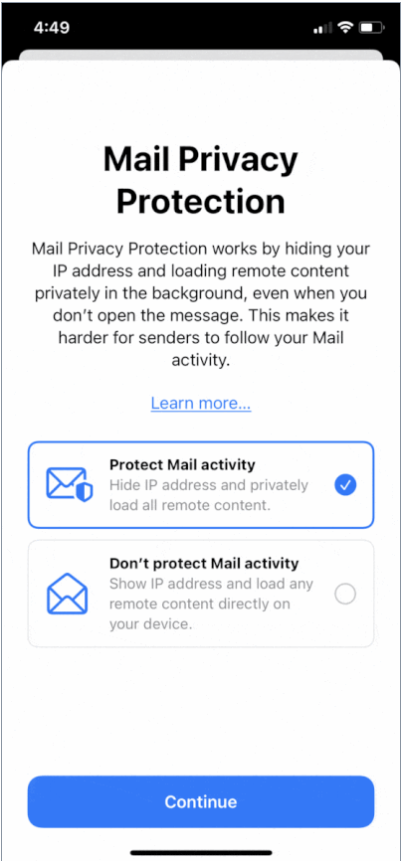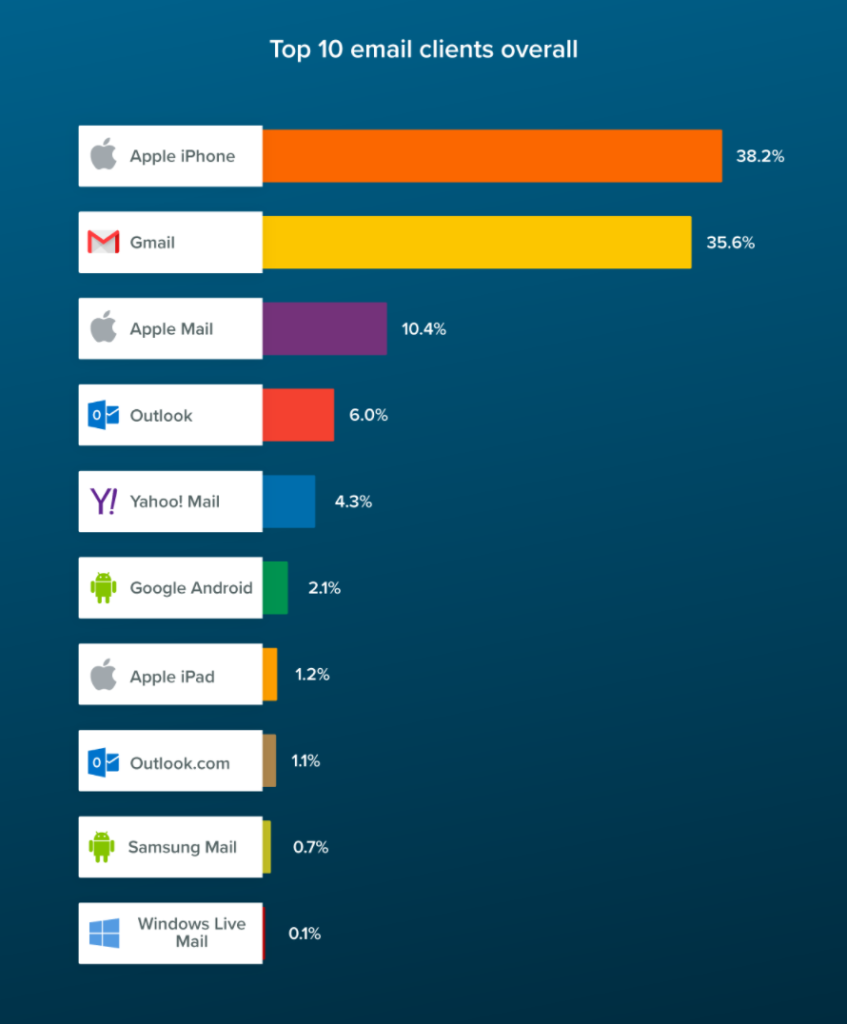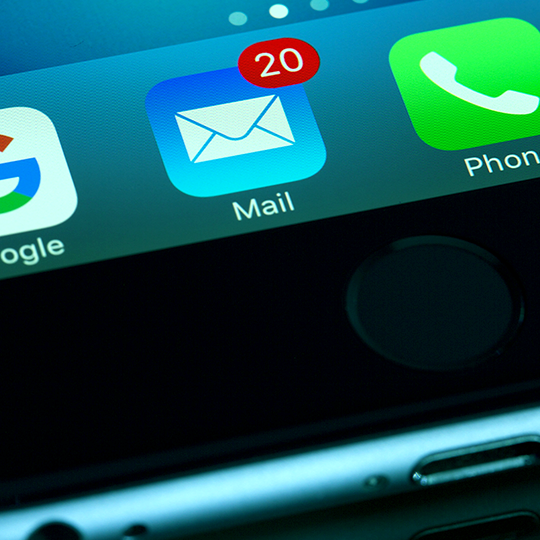Here’s what your nonprofit needs to know about Apple’s iOS 15 update.
From Stephanie Tippitt, VP Digital Strategy
Read Time: 4 min. 30 sec.
Quick question: have you noticed your email open rates lately?
In reviewing our client’s 2021 fourth quarter email marketing results, I noticed super high open rates. Awesome, right?! And then I remembered the Apple iOS 15 update that launched in September of 2021… and reality settled in. 😞
Apple’s iOS 15 introduced a new privacy update: Mail Privacy Protection (MPP for short). This update blocks email senders from being able to collect data on how users are interacting with their emails.

What does the MPP update do?
This MPP update specifically does two things:
- Automatically loads all images from emails
- Hides both IP addresses and the location of email recipients
Why is Apple iOS 15 important to email marketers?
Email service providers (ESPs), like Apple Mail for example, include an embedded 1×1-pixel image in all emails to track open rates. When recipients open your email, they automatically download that embedded image – which ESPs then log and call an “open.” Pretty cool, right?
With the new iOS 15 update, users are given the option of enabling Mail Privacy Protection on their devices. For users that chose this option, all emails sent to iOS 15 devices (including Mac desktops, iPhones, iPads and Apple watches) are registered as “open,” regardless of whether the recipient actually opened it or not.
It’s important to note that MPP will NOT affect people who use Gmail, Outlook or another mail app on their iOS device. Many people use email applications like Gmail or Outlook on their desktop, but still use Apple Mail on their mobile device.
The result: Inflated open rates
Apple iPhones are roughly 48% of the U.S. smartphone market. So far in 2022, upwards of 75% of email opens have been on a phone. Thus, approximately 36% of all U.S. email recipients (48% x 75%) could be using iOS 15. Below is a chart from Litmus that shows a breakdown of today’s top email clients:

How did Apple iOS 15 impact Email Marketing?
Are open rates dead?
Not completely, but we must use them with caution.
Open rates can still be relevant in A/B subject line tests and same-year test comparisons. Unfortunately, YOY comparisons are now irrelevant.
The impact of Apple iOS 15 on Email Marketing
Click-Through Rate (CTR) is the new Open Rate:
As open rate metrics lose their meaning, we are looking to click-through rates and donation conversation rates to identify success in digital fundraising campaigns.
ESPs are helping to create reliable open audiences:
Many ESPs (email service providers) have found solutions to help digital marketers accurately measure engagement without being halted by Apple iOS 15.
These include:
- A filter that excludes opens from users with MPP: With this filter, your email data will only show “real opens” from devices without the new MPP update.
- The ability to create a “real opens” control audience: This is a list of non-Apple Mail subscribers that open your emails.
Both of these solutions will help your team distinguish between the recipients who are using the MPP update vs. the recipients who are actually opening your fundraising emails.
Non-responder email triggers will be reevaluated:
What are non-responder emails? When an email recipient doesn’t open your organization’s email within 48 hours, they are automatically sent that same email again. At BDI, we’ve found that non-responder emails can give an 8% lift to open rates in email campaigns! With the inflated open rates, options to consider are shifting to use the click as a trigger, or staying with the open rate with the understanding that there are false positives in that number. If you choose to use the click metric, the resend group will be much larger than it was before. This could increase the lift rate, but also could increase the unsubscribe rate. If you use the open rate, the email resend group will be smaller, potentially depressing the lift rate we see in overall response. Sounds like this would be a good test!
Re-engagement strategies will be updated:
Typically, reengagement campaigns are sent to users who have not opened an email from your organization in a specified time period (typically 6 to 12 months). With the new MPP feature, some of your inactive subscribers (not all) will be missed in these re-engagement campaigns. Active subscribers will not be affected.
List hygiene strategy will be measured differently.
Currently, most list hygiene strategies use open rates to measure engagement with email recipients. Unfortunately, MPP will make it more difficult to contain your core email list to the subscribers who are truly interested and engaged. Consider adjusting your list hygiene strategy to use click rate metrics and online/offline giving history instead of open rates.
Content strategy is king and always has been.
But it’s more important than ever.
- Create valuable content.
- Create a mixture of fundraising, relationship and advocacy messaging.
- Link to relevant articles on your website.
- Offer segmented and personalized messaging to specific audiences.
Apple has definitely thrown a few curve balls that dramatically impacted both email marketing and Facebook advertising within the last year. But in the end, digital marketers will still market… and we will find a way to send the right message to the right audience at the right time. Email marketing is one of the strongest channels for fundraisers. In 2021, we saw healthy list growth and increased YOY digital revenue. Let’s keep increasing those numbers!
Apple has sent all of us a challenge with their new limitations. I’m up for that challenge, how about you?
Source: https://www.litmus.com/blog/apple-mail-privacy-protection-for-marketers/
Trending now! Click here to read more on current Digital and Analytics.




